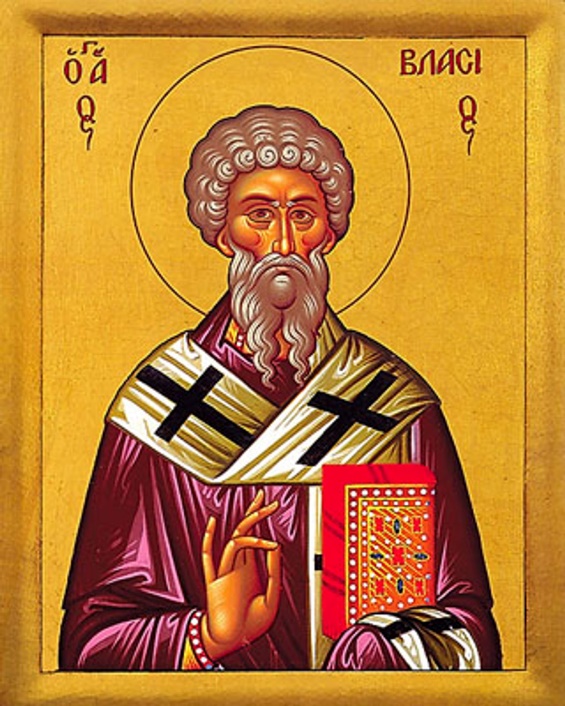(February 2024) Did You Know – St Blaze
 St Blaze was the Bishop of Sebaste in Armenia (now Turkey) during the fourth century. Although little is known about his life various accounts record that he was a physician before becoming a Christian Bishop. During his life he became a healer of bodily ailments as well as a physician of souls. In 316 the Governor of Cappadocia began a persecution of Christians by order of the Emperor. While hiding from his persecutors in a cave, he continued to perform acts of healing including curing a young boy who nearly died because of a fishbone stuck in his throat. For this act of healing, Bishop Blaze, as he was usually called, has been associated with those afflicted with illnesses of the throat. This last miracle brought him fame. Even now, in some Roman Catholic churches, including some in Oxford, you can still have your throat blessed on his feast day – 3 February.
St Blaze was the Bishop of Sebaste in Armenia (now Turkey) during the fourth century. Although little is known about his life various accounts record that he was a physician before becoming a Christian Bishop. During his life he became a healer of bodily ailments as well as a physician of souls. In 316 the Governor of Cappadocia began a persecution of Christians by order of the Emperor. While hiding from his persecutors in a cave, he continued to perform acts of healing including curing a young boy who nearly died because of a fishbone stuck in his throat. For this act of healing, Bishop Blaze, as he was usually called, has been associated with those afflicted with illnesses of the throat. This last miracle brought him fame. Even now, in some Roman Catholic churches, including some in Oxford, you can still have your throat blessed on his feast day – 3 February.
The Bishop was finally captured, tortured and martyred, being beaten with heavy metal combs used to tease sheep wool. Bishop Blaze became popular in England from about the seventh century and, as early as 1222, the Synod of Oxford, held at Osney Abbey, not only pronounced that St George should be the patron saint of England, but also that all wool combers should not work on St Blaze’s Day. This edict, in pre-industrial-revolution Oxfordshire, was soon translated as meaning a holiday for every wool worker who could take the day off. Since wool was very important to the local economy this would have meant the majority of the village’s agricultural workers. Sibford’s sheep farmers would surely have taken advantage of this additional holiday.
Maureen Hicks